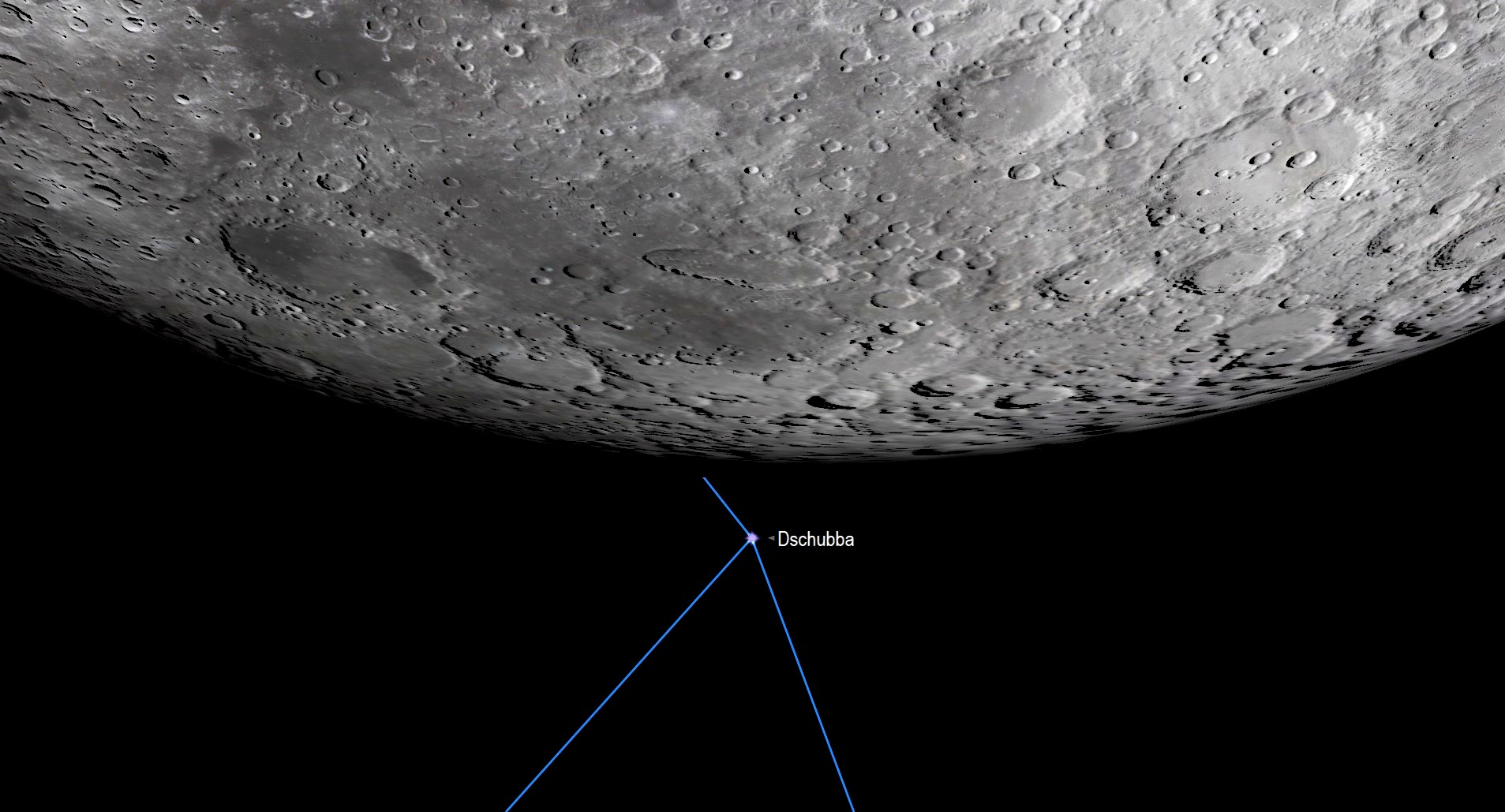The moon will block a bright double star tonight. Here's how to see it.
The moon will block the bright double star Delta Scorpii for stagazers in the northeastern U.S. and eastern Canada.
The nearly full moon will block a bright double star in the night sky tonight (June 12) and some stargazers may be able to see it happen with binoculars or a telescope.
Weather permitting, stargazers in the northeastern U.S. and eastern Canada can see the double star Delta Scorpii (also known as Dschubba) as it slips behind the moon's leading edge for about hour. The exact time of the event varies depending on your specific location, so you'll want to check out a skywatching app like SkySafari or software like Starry Night to calendar for times. Our picks for the best stargazing apps may help you with your planning.
"In New York City, the leading, dark edge of the moon will cover the two stars at 10:19 p.m. EDT. They will emerge from behind the moon’s opposite, bright limb at 11:07 p.m. EDT," writes geophysicist Chris Vaughan, amateur astronomer with SkySafari Software who oversees Space.com's Night Sky calendar. "Try to start watching a few minutes ahead of each time noted."
Related: The brightest planets in June's night sky and how to see them

Looking for a telescope for the next stargazing event? We recommend the Celestron Astro Fi 102 as the top pick in our best beginner's telescope guide.
Delta Scorpii binary star system (Dschubba is the primary) that can be found in the the Scorpius constellation. Its occultation by the moon comes just days ahead of the full moon, which will occur on Tuesday (June 14).
The June full moon is known as the Full Strawberry Moon and will also occur as the moon is near perigee, or its closest point to Earth in its monthly orbit. That will make it a supermoon, per NASA, gaining it the nickname the Strawberry supermoon of 2022.
On Tuesday, you can see a live webcast of the Strawberry supermoon for free, courtesy of the Virtual Telescope Project led by astrophysicist Gianluca Masi in Ceccano, Italy. For the rest of June, stargazers who rise before dawn can see a rare alignment of five bright planets, with Mercury, Venus, Mars, Jupiter and Saturn visible in the early morning sky.
Breaking space news, the latest updates on rocket launches, skywatching events and more!
If you're looking for a telescope or binoculars to see star occultations like tonight's event, our guides for the best binoculars deals and the best telescope deals now can help. Our best cameras for astrophotography and best lenses for astrophotography to prepare to capture the next stargazing sight in a photo.
Editor's Note: If you snap a photo of the planetary alignment and would like to share it with Space.com's readers, send your photo(s), comments, and your name and location to spacephotos@space.com.
Email Tariq Malik at tmalik@space.com or follow him @tariqjmalik. Follow us @Spacedotcom, Facebook and Instagram.
Join our Space Forums to keep talking space on the latest missions, night sky and more! And if you have a news tip, correction or comment, let us know at: community@space.com.

Tariq is the award-winning Editor-in-Chief of Space.com and joined the team in 2001. He covers human spaceflight, as well as skywatching and entertainment. He became Space.com's Editor-in-Chief in 2019. Before joining Space.com, Tariq was a staff reporter for The Los Angeles Times covering education and city beats in La Habra, Fullerton and Huntington Beach. He's a recipient of the 2022 Harry Kolcum Award for excellence in space reporting and the 2025 Space Pioneer Award from the National Space Society. He is an Eagle Scout and Space Camp alum with journalism degrees from the USC and NYU. You can find Tariq at Space.com and as the co-host to the This Week In Space podcast on the TWiT network. To see his latest project, you can follow Tariq on Twitter @tariqjmalik.

